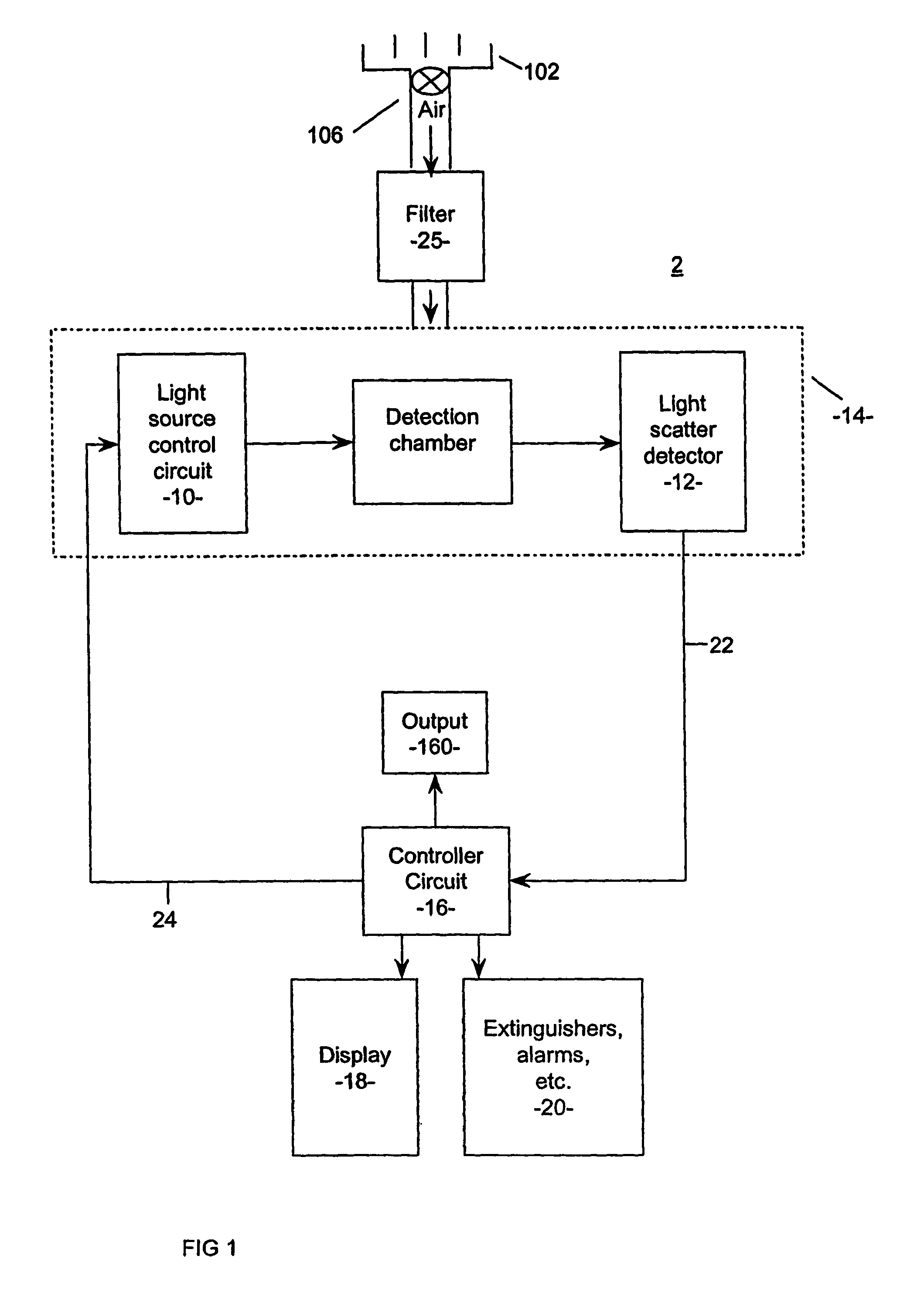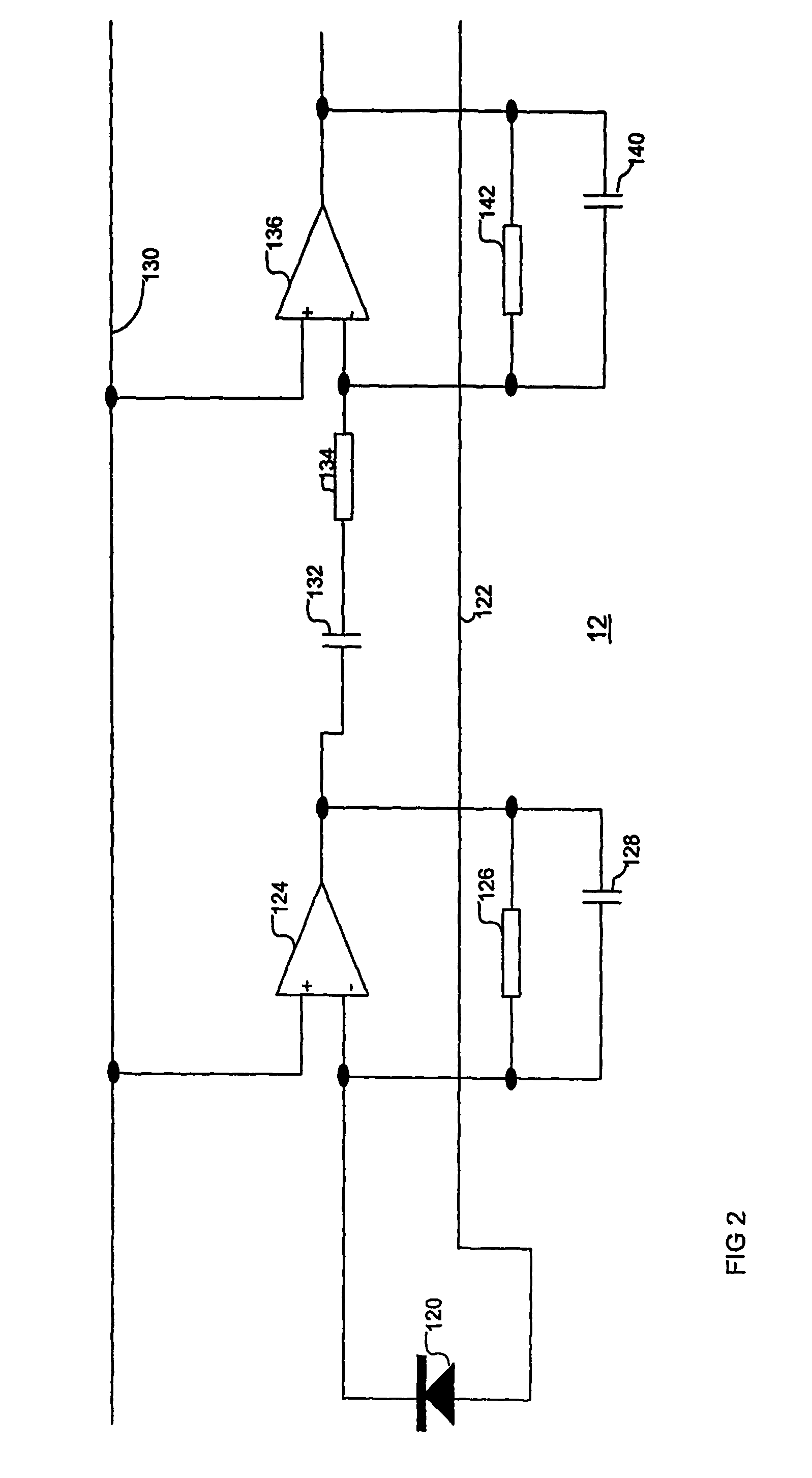Method and system for determining particle transmittance of a filter in particle detection system
a particle detection and filter technology, applied in chemical methods analysis, instruments, photoelectric discharge tubes, etc., can solve the problems of significant property damage, dust may seriously affect the output of the detector, and the subsequent removal of the suppressant may be quite hazardous
- Summary
- Abstract
- Description
- Claims
- Application Information
AI Technical Summary
Problems solved by technology
Method used
Image
Examples
Embodiment Construction
[0117]Initially referring to FIG. 1, an example particle detector system being an aspirated smoke detector 2 is shown having a pipe network 102, a detection chamber 14, a light source 10, a detector 12, an aspirator 106 and a controller 16. Also shown is an output 160, display 18 and alarm and extinguishing equipment 20. A filter 25 is located before the detection chamber 14 to filter unwanted particles from the. From the chamber 14 the sampled air is expelled to the outside environment of the detection system.
[0118]Filter 25, such as a volume foam filter having pores, will accumulate particles within the pores over its life. The particles appear to block the pores, reducing particle transmittance, however the exact mechanisms of filter blocking are not known. Blocked pores will not let dust or all smoke particles through, but may still let air through at flow rates and with pressure drops that are very close to the initial conditions, thus making it impractical to detect a filter w...
PUM
 Login to View More
Login to View More Abstract
Description
Claims
Application Information
 Login to View More
Login to View More - R&D
- Intellectual Property
- Life Sciences
- Materials
- Tech Scout
- Unparalleled Data Quality
- Higher Quality Content
- 60% Fewer Hallucinations
Browse by: Latest US Patents, China's latest patents, Technical Efficacy Thesaurus, Application Domain, Technology Topic, Popular Technical Reports.
© 2025 PatSnap. All rights reserved.Legal|Privacy policy|Modern Slavery Act Transparency Statement|Sitemap|About US| Contact US: help@patsnap.com



